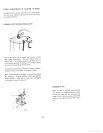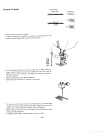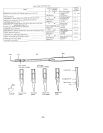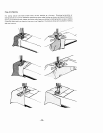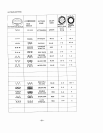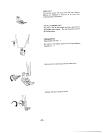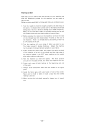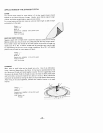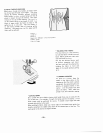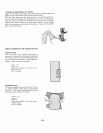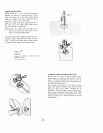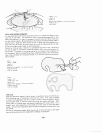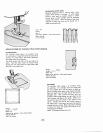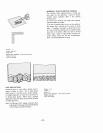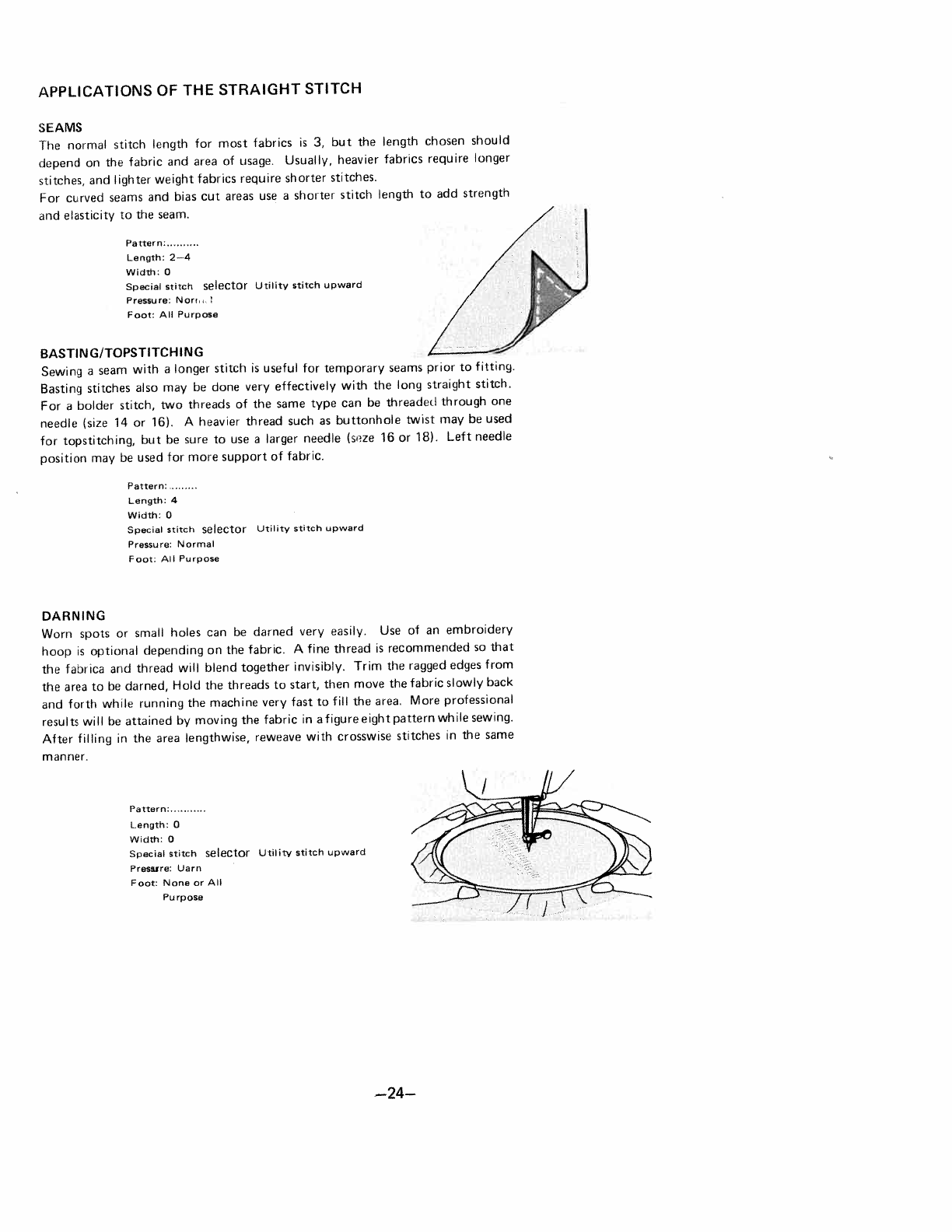
APPLICATIONS
OF
THE
STRAIGHT
STITCH
SEAMS
The
normal
stitch
length
for
most
fabrics
is
3,
but
the
length
chosen
should
depend
on
the
fabric
and
area
of
usage.
Usually,
heavier
fabrics
require
longer
stitches,
and
lighter
weight
fabrics
require
shorter
stitches.
For
curved
seams
and
bias
cut
areas
use
a
shorter
stitch
length
to
add
strength
and
elasticity
to
the
seam.
Pattern:
Length:
2—4
Width:
0
Special
stitch
selector
utility
stitch
upward
Pressure:
Nor,..
Foot:
All
Purpose
BASTING/TOPSTITCHING
Sewing
a
seam
with
a
longer
stitch
s
useful
for
temporary
seams
prior
to
fitting.
Basting
stitches
also
may
be
done
very
effectively
with
the
long
straight
stitch.
For
a
bolder
stitch,
two
threads
of
the
same
type
can
be
threader!
through
one
needle
(size
14
or
16).
A
heavier
thread
such
as
buttonhole
twist
may
be
used
for
topstitching,
but
be
sure
to
use
a
larger
needle
(sze
16
or
18).
Left
needle
position
may
be
used
for
more
support
of
fabric.
Pattern
Length:
4
Width:
0
Special
stitch
selector
Utility
stitch
upward
Pressure:
Normal
Foot.
All
Purpose
DARNING
Worn
spots
or
small
holes
can
be
darned
very
easily.
Use
of
an
embroidery
hoop
is
optional
depending
on
the
fabric.
A
fine
thread
is
recommended
so
that
the
fabrica
and
thread
will
blend
together
invisibly.
Trim
the
ragged
edges
from
the
area
to
be
darned,
Hold
the
threads
to
start,
then
move
the
fabric
slowly
back
and
forth
while
running
the
machine
very
fast
to
fill
the
area.
More
professional
results
will
be
attained
by
moving
the
fabric
in
a
figure
eight
pattern
while
sewing.
After
filling
in
the
area
lengthwise,
reweave
with
crosswise
stitches
in
the
same
manner.
Pattern:
Length:
0
Width:
0
Special
stitch
selector
Utility
stitch
upward
Pressare:
Uarn
Foot:
None
or
All
Purpose
—24—




